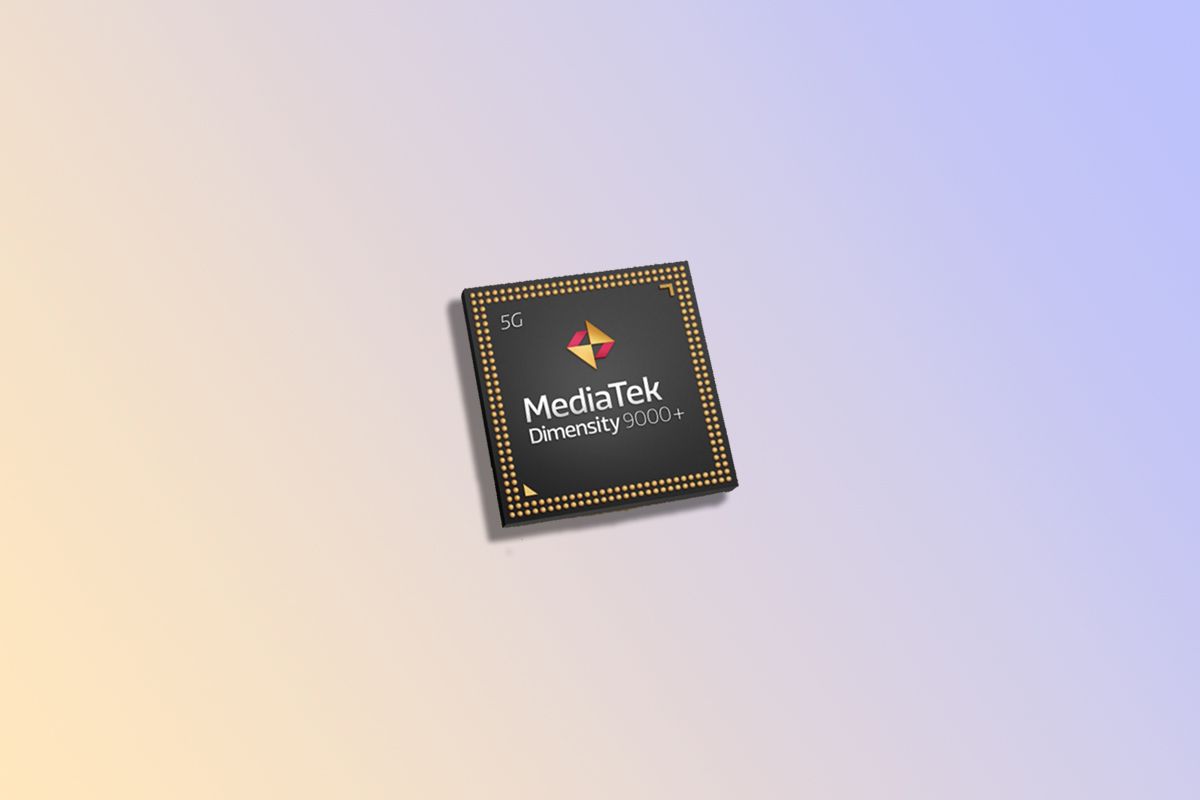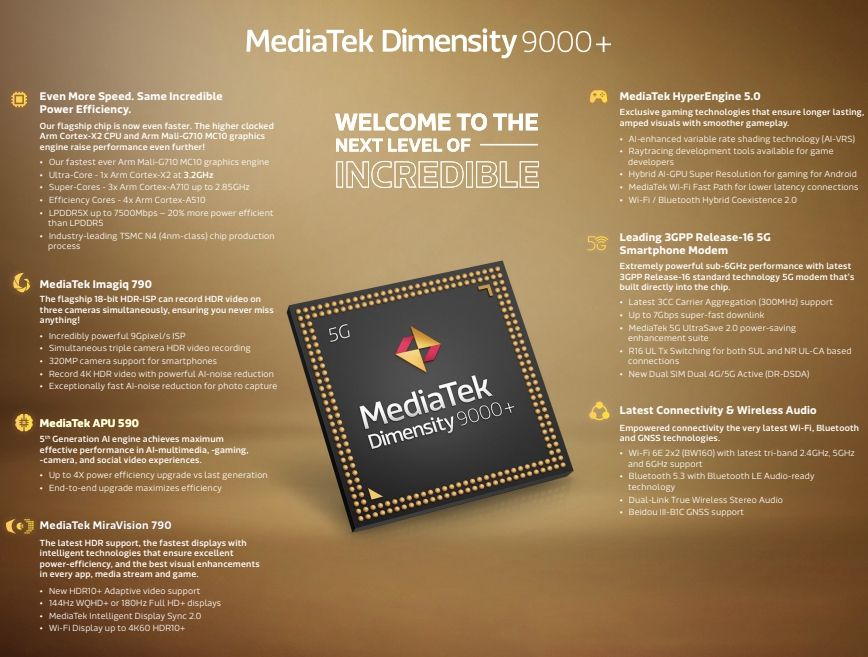In November last year, MediaTek debuted its first 4nm flagship chipset, the Dimensity 9000. The octa-core chipset featured an Arm Cortex-X2 prime core paired with three Cortex-A710 performance cores, four Cortex-A510 efficiency cores, and a Mali-G710 GPU. It also packed MediaTek's 5th-gen AI processing unit (APU) and an 18-bit Image Signal Processor (ISP). The Dimensity 9000 offered significant performance improvements over MediaTek's previous flagship chipset, but its successor, the new Dimensity 9000 Plus, seems to be a minor upgrade.
Following in Qualcomm's footsteps, MediaTek today announced a mid-cycle refresh for its latest flagship chipset. But while the Snapdragon 8 Plus Gen 1 came with several noteworthy changes, the new Dimensity 9000 Plus is essentially the same chip with a higher clocked prime core. Check out the table below for a side-by-side comparison.
MediaTek Dimensity 9000 Plus: Specifications
|
Specification |
MediaTek Dimensity 9000 Plus |
MediaTek Dimensity 9000 |
|---|---|---|
|
Manufacturing process |
|
|
|
CPU |
|
|
|
GPU |
|
|
|
Display |
|
|
|
AI |
|
|
|
Memory |
|
|
|
ISP |
|
|
|
Modem |
|
|
|
Connectivity |
|
|
As you can see, MediaTek hasn't introduced any noteworthy changes with the new Dimensity 9000 Plus. But that doesn't necessarily mean the new chip won't offer any real-world performance benefits. MediaTek claims that the new chip provides a 5% boost in CPU performance and 10% improvement in GPU performance compared to the Dimensity 9000, which should result in some real-world performance gains. But the difference may not be as noteworthy as it was between the Snapdragon 8 Gen 1 and the Snapdragon 8 Plus Gen 1. We'll make sure to put this to the test as soon as new phones featuring the Dimensity 9000 Plus hit the market.
Speaking of which, MediaTek says that devices featuring its latest flagship chipset will hit the market sometime in Q3 2022. The company is yet to share the names of the OEMs that will use the chips on their upcoming flagships. We don't expect the list to be too long since the Dimensity 9000 hasn't made an appearance on many devices either. So far, only OPPO and Vivo have launched phones featuring MediaTek's previous flagship chipset, likely because most buyers still prefer Qualcomm's Snapdragon chipsets in the premium smartphone segment.
What do you think of the new MediaTek Dimensity 9000 Plus? Do you think it's a welcome upgrade or do you feel that it's just a marketing ploy to keep up with Qualcomm's flagship offerings? Let us know in the comments section below.


